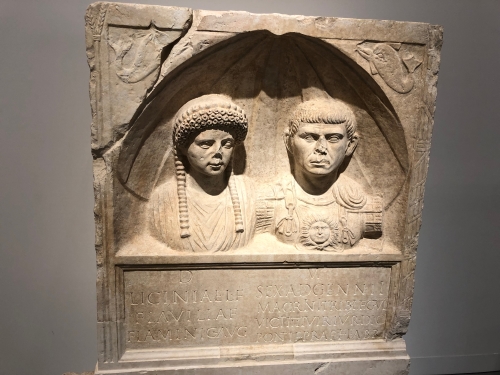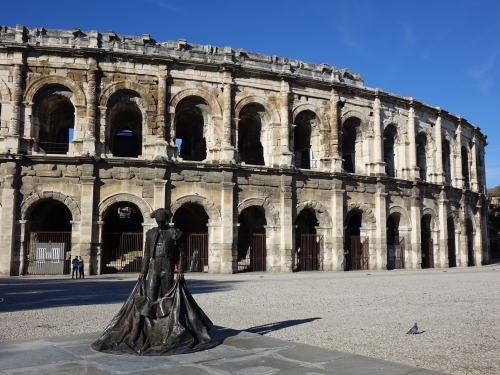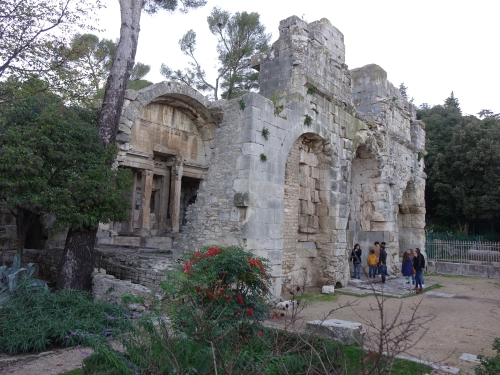Blog TWHS Visits
Roman heritage of Nîmes
My visit to the TWHS of Nîmes seemed like such a simple plan: fly to Marseille and then drive there in an hour. In Nîmes I then would have an afternoon to see the Roman monuments. But reaching the city this particular last Saturday was hindered by people in 'yellow vests', protesting against the high fuel prices and other issues. All access roads but one had been blocked, so with a huge U-turn (which cost me over an hour extra) I had to enter the city from the north. Even there it was a slow affair. Fortunately all protests that I came across in the south of France went peacefully; I got a free passage twice on the toll roads and a banana in return for the discomfort.

In Nîmes itself, the Musée de la Romanité was my first destination. This is a grand Roman museum that has opened this summer to reinforce the WH candidacy. For 17 EUR I got a combi-ticket that also gave access to the 3 most important Roman monuments of the city: the amphitheatre, the Magne tower and the Maison Carrée. The museum interior is modern and light. Nice to walk through, but the collection itself I found not that special.
Nîmes seems to feel the need to measure itself with the neighbouring cities of Orange and Arles, which are already WHS because of their Roman history. However, ‘Nemausus’ was only one of the many colonies founded by the Romans in foreign lands, in this case an area inhabited by Gauls. The question where it distinguished itself from the others remains unanswered at the museum as well. The museum can even become an obstacle for WH inscription: ICOMOS found that the visual integrity of the amphitheatre is spoiled by Musee de Romanité. That may be a bit harsh, but it is remarkable how close the two are to each other. The museum has a panoramic terrace which actually is too close and too low to have a good view of the amphitheatre.

The oval amphitheatre nowadays is mainly used for bullfights. In Roman times it was a gladiator arena, something that is still remembered by cardboard information panels and a single tiny exhibition room. It mostly reminded me of an outdated football stadium, with many entries and chilly passageways.
The most beautiful building in the city center undoubtedly is the Maison Carrée , a perfect Roman temple. You can go inside - it has been transformed into a cinema. Every half hour a film about the Roman history of the city is shown. The main characters of this story are Licinia Flavilla and Sextus Adgennius Macrinus: the two whose heads adorn the most beautiful tomb in the museum (see photo 1 above).
Finally I walked on to the Gardens of the Fountain. In a corner of this park, one of the first French city parks, lies another Roman monument: the Temple of Diana. This was probably not a temple at all (a library perhaps?), and certainly not dedicated to the goddess Diana. What now remains is a ruin in a fragile state, partly flooded with water.

The decision to add the Historic Urban Ensemble of Nîmes to the World Heritage List was deferred earlier this year. ICOMOS doubted whether Nîmes is “sufficiently distinguishable from other cities with similar Roman roots” – or at least did not see it proven in the comparative analysis. But it recommended to focus on that Roman heritage angle anyway for a future renomination, as a wider scope including Renaissance, Neoclassical and modern structures would have even less chance of success. I found Nîmes unmistakably French, with grand squares and classicist buildings: pretty pleasant but also nothing special. The amphitheatre and Maison Carrée may be excellent preserved monuments from Roman times, but they did not move me in any way: they are too much connected to mediocre tourist traps.
Els - 1 December 2018